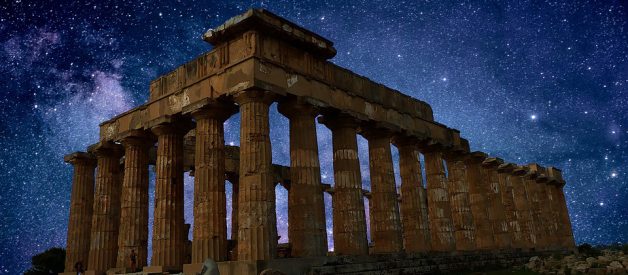Only A Few Score Ancient Greek Temples Still Exist. Which Are The Best?
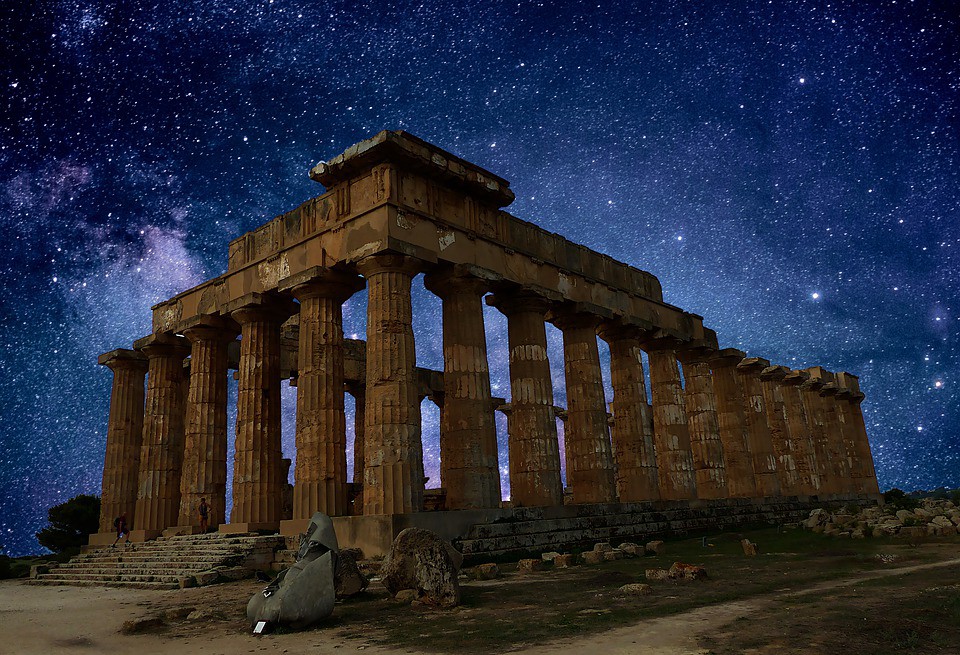 Greek poet Odysseas Elytis called them ?temples in the shape of the sky.?
Greek poet Odysseas Elytis called them ?temples in the shape of the sky.?
The Greeks planted colonies widely, from Istanbul to Marseilles to Alexandria. And scattered all over the Mediterranean you will find remains of Greek temples (Wikipedia?s (incomplete) list notes 43 of them; it would be a good project for people to add to that list). But which ? whether due to their preservation, or their setting, or their architectural value ? are the best to visit? We?ve criss-crossed the Mediterranean in pursuit of the best, and we?re happy to share our list with you.
12. Temple of Hephaistos at Athens
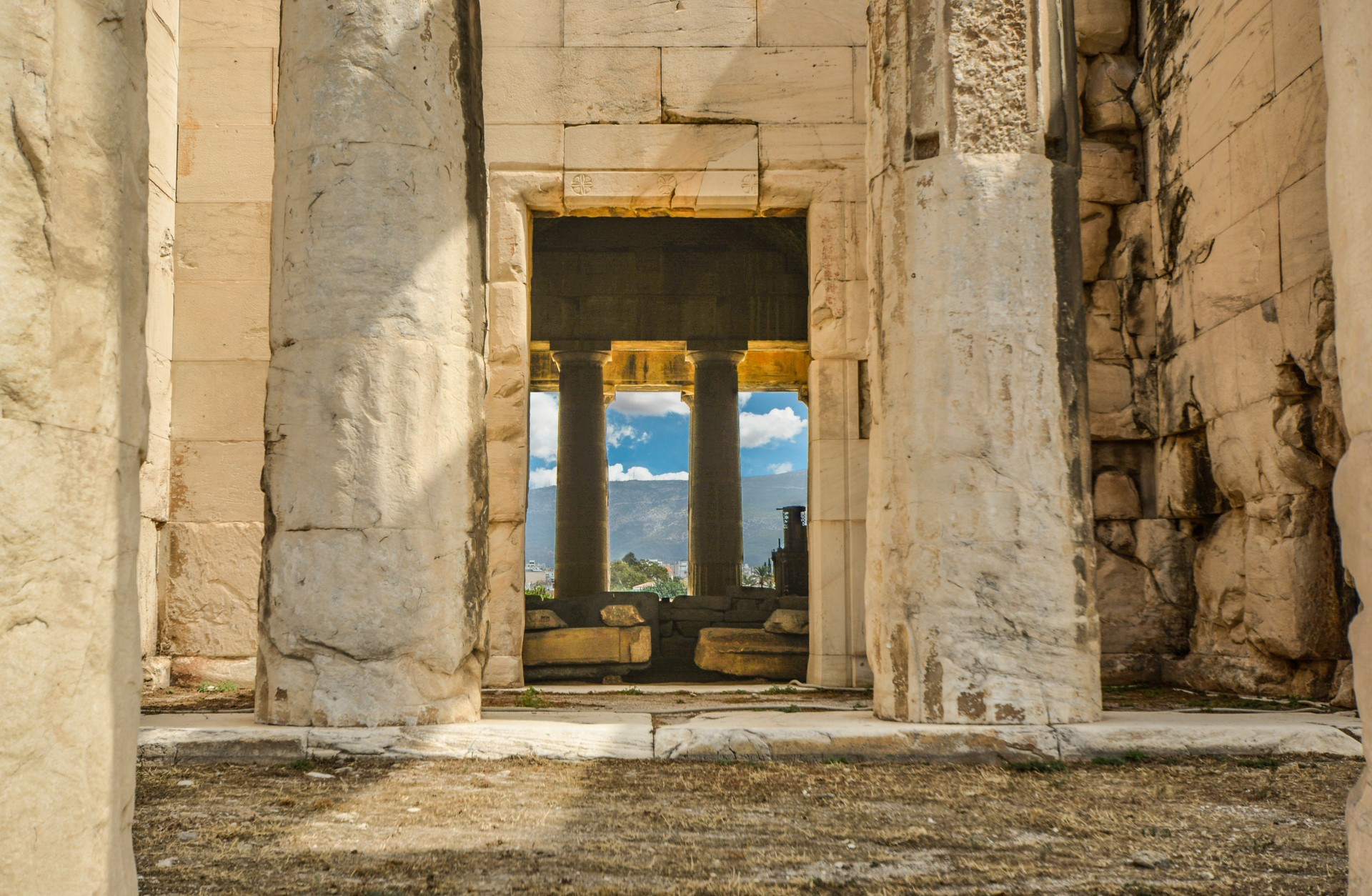 The Hephaestion in Athens (source).
The Hephaestion in Athens (source).
Overshadowed by the more spectacular Acropolis in Athens, the Hephaestion is under-appreciated. One of the very best preserved of all Greek temples (look at that ceiling!), it?s a must-see for any visitor to Athens. Set in a pleasant if slightly bland park ? it?s easy to feel disconnected from the urban fabric of Athens here ? it?s not difficult to find a shady place to watch the play of light on the temple?s myriad carved surfaces. Long known as the Theseum and a favorite of 19th century artists, it?s a must-see for lovers of ancient architecture.
11. Temple of Apollo at Didyma
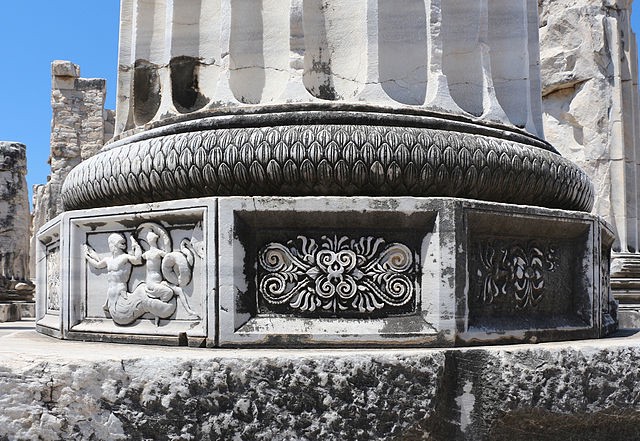 One of the column-bases at Didyma (source).
One of the column-bases at Didyma (source).
In school you hear about Doric, Ionic, and Corinthian columns, but almost all the best-preserved Greek temples are Doric. At Didyma (Didim, in southwest Turkey) you?ll get your best opportunity to appreciate the Ionic: the Temple of Apollo Didymaios. Be prepared to be impressed: the temple?s platform is almost 400 feet long, and supported an incredible forest of 116 columns each more than six feet in diameter and 60 feet high. Admiring what is left, you begin to grasp the first reason why we have so little of the Ionic: these temples were lofty, ambitious structures. Sixty-foot columns don?t typically stand earthquakes, and when they fall, they shatter. But the Ionic style isn?t only to be admired for its size. These are some of the most elegant, beautiful ruins you will ever see: giant Medusa-heads watch over the ruins, exquisite reliefs ring the column bases, and everything is made of a gleaming marble whose beauty you have to see to believe. The vast temple enclosed an open-air court, where were kept a spring and laurel sacred to Apollo. Bring your Herodotus with you: the sanctuary ? generally referred to as ?Branchidae? by Herodotus, for the family that maintained the temple ? was a key player in the Ionian Revolt, and Father of History recounts all the steps that led to its destruction in 494 B.C.
10. Temple of Apollo at Delphi
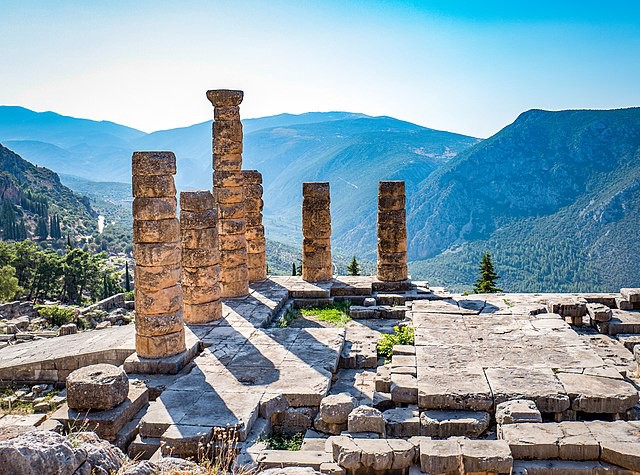 Temple of Apollo at Delphi (source).
Temple of Apollo at Delphi (source).
Delphi, easily reached from Athens, is one of the most touristed places in Greece. But it?ll take a lot more visitors to ruin this incredible mountain sanctuary. Tucked away in a valley the Greeks thought resembled a uterus (delphus), it?s still one of the most spectacular religious sites in the world. The views alone are worth the trip. And while the actual structure of the temple probably won?t overwhelm you, the significance of the place, and the weight of so much emotional human history ? for centuries, people came here in the thousands literally looking for answers ? still can be felt today. The famed objects are almost all gone ? the wooden staff offered by Brutus, Rome?s first consul, or the rich gifts left by Croesus ? but reading Pausanias?s account of them all will serve to remind you that this little mountain village was in many ways the spiritual center of the ancient world.
9. Temple of Apollo at Bassae
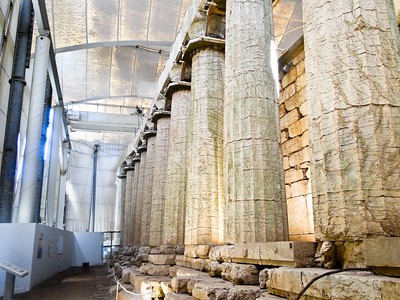 The Temple of Apollo at Bassae (source).
The Temple of Apollo at Bassae (source).
If you think Delphi?s mountain scenery is spectacular, wait til you try a visit to Bassae, a truly remote Greek temple atop a mountain literally in the middle of Arcadia. Most of the year you?ll probably have the place pretty much to yourself, too ? if you can get there (it?s accessible only by car or by an expensive taxi). It may be the best-preserved Greek temple in the world, and as such has been the subject of much academic study (and the first to be made a UNESCO World Heritage Site). Supposedly designed by Ictinus, the architect of the Parthenon, this temple?s beauty and harmony were singled out for praise by Pausanias almost two thousand years ago. And just to see those columns, still standing on that summit after all these centuries, is enough to give the pious traveller chills. The interior frieze was carted off to the British Museum in 1814, where you can still admire it (Mary Beard and John Henderson made the frieze the starting-point for their 2000 volume, Classics: A Very Short Introduction, a suitable companion for your journey in Arcadia).
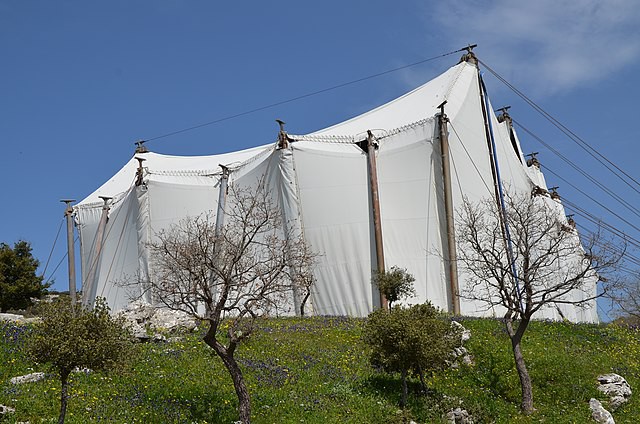 Ah, Arcadia! (source)
Ah, Arcadia! (source)
This site might well have taken the top spot on our list were it not for the fact that in 1987 an enterprising preservationist decided the temple needed to be protected, and that the right way to protect it was to put it beneath a gargantuan latex tent. As you drive up the winding road it appears that the mountain is now crowned not by an extraordinary ancient temple but something rather like a Cyclops? discarded condom. The temporary structure ? which is remarkable-looking on the inside, I will confess ? has now been there for almost thirty years. To make matters worse, at times the ?preservation works? inside take up all the area inside the tent, and visitors are allowed to visit only the front face of the temple. What was once perhaps the most spectacular place in all Greece is now at times almost completely off limits. Not only that, but the tent has spawned a whole brood of conspiracy theories (?what exactly are they hiding up there? ALIENS??). But a trip up to this three-thousand-foot-high ridge is to see just how spectacular the Greek architectural imagination could be.
8. Temple of Poseidon at Sounion
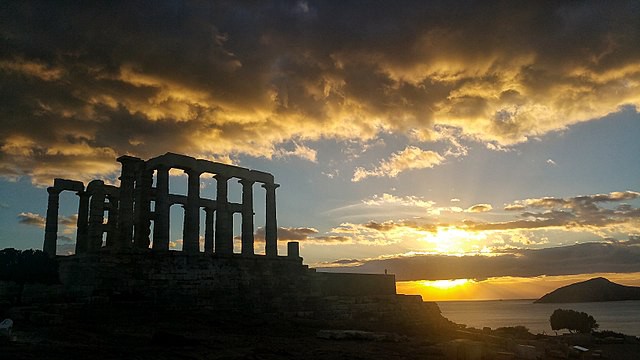 There?s no place like Sounion. (source)
There?s no place like Sounion. (source)
The mountains of Greece are remarkable, but when you think of Greece, you think first and foremost of the sea. The most glorious religious manifestation of this is the temple of Poseidon at Sounion. On a sea-girt promontory jutting into the Aegean, almost every ship bound for Athens came within sight of this clifftop shrine. The structure is decidedly ruinous, but the spectacular setting is forever memorable (as is the signature from Byron carved into one of the pillars). The site history is not complex here ? there has been the temple and the sea and the rock and not much else. On summer evenings a crowd gathers at the temple to watch the sunset, with a pleasant holiday vibe. It?s touristy, but the spot is still appreciably wild: I?ve hiked all over the promontory and even camped out there to get a little time alone with the beach.
7. Temple of Apollo at Cumae
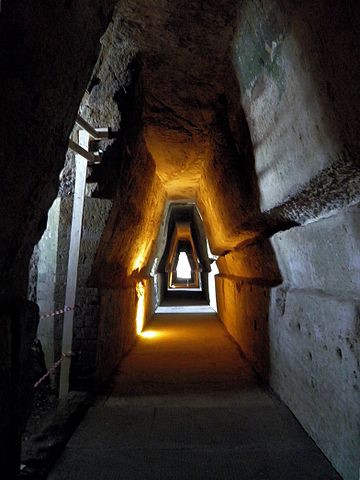 The cave beneath the acropolis of Cumae. (source)
The cave beneath the acropolis of Cumae. (source)
Cumae is the place where Daedalus landed (without Icarus) after flying away from the Labyrinth, and his wings were supposedly kept in the temple of Apollo there. There?s not much left of the temple today ? just the foundations ? but the location on an abandoned hillside in Italy overlooking the Mediterranean is second to none. It?s the setting of Book Six of the Aeneid too, and reading Vergil?s lines on-location at the temple will give you shivers. Factor in the remarkable cave structure there, the Roman roads climbing the acropolis, and the temples of Zeus and Artemis nearby, and this is one of the best archaeological sites in the whole Mediterranean. It?s undiscovered too ? the crowds all head to Pompeii and Naples just to the south.
6. Temple of Hera at Selinunte
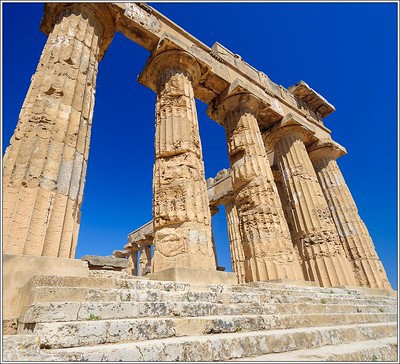 Temple of Hera at Selinunte. (photo by Jos Dielis)
Temple of Hera at Selinunte. (photo by Jos Dielis)
Selinunte is one of a trio of top-notch Greek temple sites in Sicily (the other two are Segesta and Agrigento), all of which make our list. On a high plain overlooking the sea and flanked by golden beaches, it?s pretty easy to have a good time at Selinunte: mornings with the temples, afternoons at the beach, and evenings at the clubs. Not only that, but Selinunte boasts five major temple structures and several minor ones sprawling over the largest archaeological park in Italy. ?Temple E? (generally presumed to be a temple of Hera) makes for the best pictures ? it was re-erected using the original stones ? but the whole site is interesting, especially if you can get there before temperatures start to soar.
5. Temple of Aphaia at Aegina
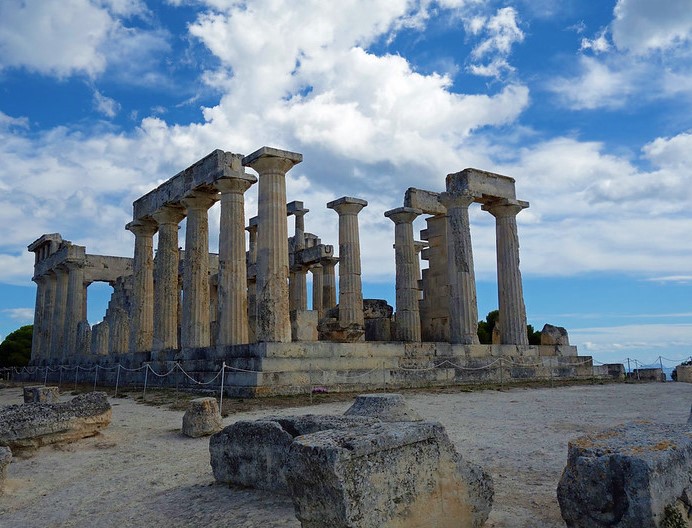 Temple of Aphaia at Aegina. (by Christine Wagner, edited)
Temple of Aphaia at Aegina. (by Christine Wagner, edited)
Once the home of the great warrior Ajax, Aegina, just across the Saronic Gulf from Athens, doesn?t get the love that the more distant Greek islands get, but this temple of the mysterious ?disappeared? Earth goddess Aphaia (aphaia means ?not appearing?) is something special. It sits atop a hill overlooking the sea, on a quiet part of the island far away from the crowds. The temples of the Acropolis and Sounion are actually visible from here, and there may have been some kind of communication in antiquity from temple to temple with watchfires. The panorama is all big sky, old stone, and blue sea, an essence of Greece refined up through twenty-five hundred years. The temple itself is Doric, from around 500 B.C., and the sculptures from its pediment ? now in Munich ? stand, like the temple itself, right in that happy borderland between the Archaic Greek period and the full Classical style.
4. Temple at Segesta
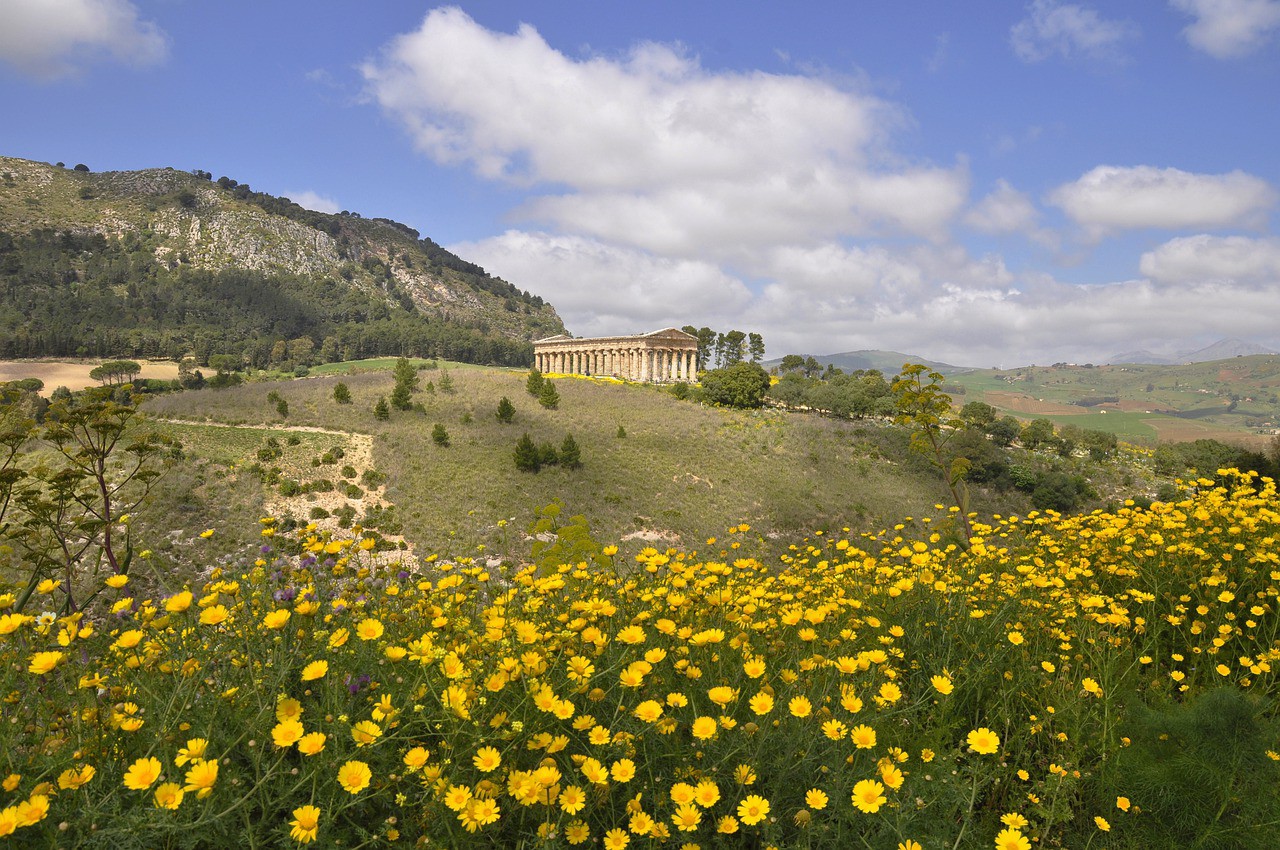 The temple to an unknown god at Segesta. (source)
The temple to an unknown god at Segesta. (source)
Strolling through the flowery hillsides, you might find it hard to imagine that Segesta once was a city. Almost nothing of the place remains, a fact which makes its two principal ruins all the more striking: an impressively preserved stone theater and an even more perfectly preserved Doric temple. You start by the temple, its unfluted columns aging to the color of sand and ochre; the Sicilian sun marks time?s every stroke upon the stone with a casting of shadow; landscaped grounds display the sun-loving Sicilian vegetation. A half-mile walk up the hill brings you to the theater, cunningly built as most of them are, splendidly preserved and following the line of the hill. Turning back to see the temple set among fields, with the waters of the Mediterranean in the distance and even further beyond, the endless hills of Sicily, you get one of the world?s most picturesque views. Thomas Cole selected precisely this view to produce one of his best Grand Tour keepsake paintings. Past and present seem to join hands here. Even today the temple looks almost brand-new, as if a team of builders threw it up in the past month and have just gone home for the day before coming back tomorrow to put on the roof and give it a final paintjob.
3. The Temple of Athena Parthenos at Athens
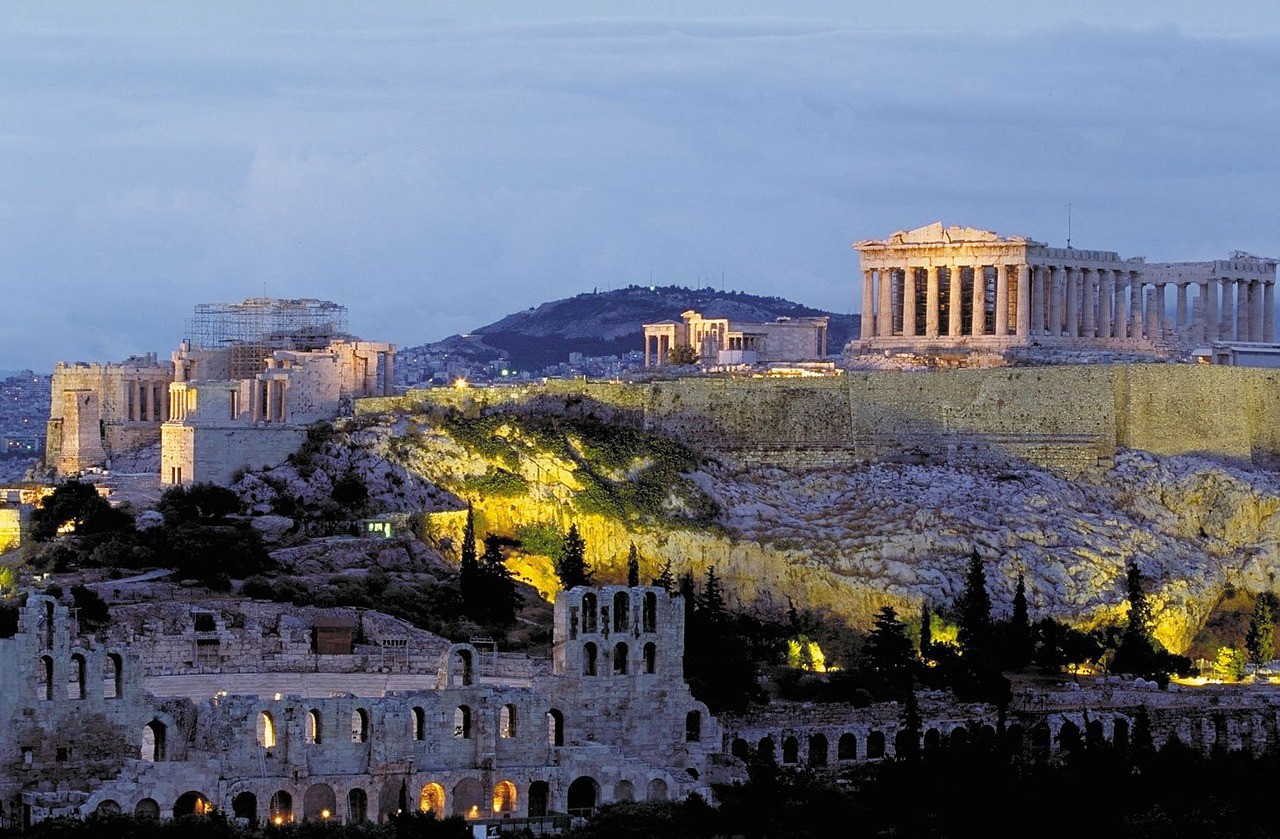 The Acropolis. (source)
The Acropolis. (source)
We know, we know, we know: the crowds can be awful, the sun is so glaring your eyes start watering without sunglasses, it?s beastly hot in summer, and parts of the place get roped off for no apparent reason. But it?s the Parthenon, and there?s a reason the crowds keep showing up. The most iconic image of Ancient Greece, the temple of Athena Parthenos is still a standout among Greek temples, for its incredible position at the center of Greece?s greatest city, for the Doric proportions perfectly poised between airy elegance and stony heft, for the gorgeous Pentelic marble that seems to mirror the color of the sun in the sky ? pink at sunrise, blinding white at midday, honey-colored in the afternoon ? and because it?s the Parthenon. This is the chief monument of ?the school of Hellas,? the tangible remainder of Periclean Athens. It?s hard not to be impressed when you?re there. And there?s the rest of the Acropolis to see too ? from the Erechtheum on top to the theater of Dionysus below (yes, that theater). There?s a reason why this is all a UNESCO World Heritage Site. You?re better off going off-season, but no one who loves Greek temples is going to want to miss this one.
2. Temple of Poseidon at Paestum
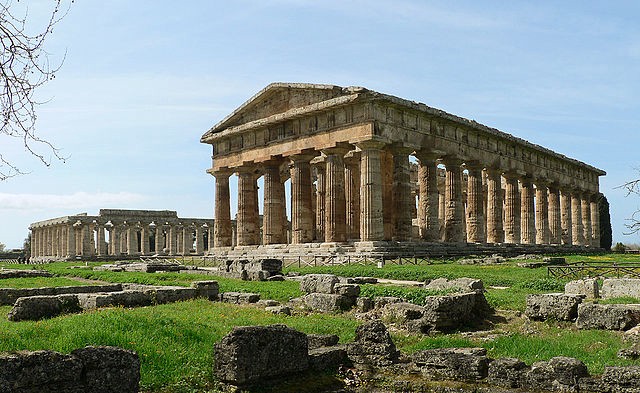
The Italians have chutzpah, and at times it pays off. The temples at Paestum, just south of the Amalfi Coast, face onto a road. There are businesses along the road: a few hotels, a few restaurants, a few bars. This could be a disaster. But it?s not: it?s delightful, and it makes visiting Paestum a real pleasure. The last time I was there I visited a bar where couples and friends were lined up at tables just staring at the sun setting over the Temple of Athena. It seemed like some kind of perfect dream of Mediterranean life. And it?s Italy: the restaurants are fabulous (they?re famous for their mozzarella di bufala), the bars are fabulous. There?s even a hair salon with a temple view. And the temples themselves? They are perfect. Their names have changed over generations, but the one now known as the Temple of Poseidon is one of the standout works of antiquity. The etching Piranesi completed of it ? perfectly capturing the mystery of all things old ? is perhaps the master?s greatest work. That Paestum comprises multiple temples, that they are so accessible, that there are perfect vantage points from which to draw or contemplate them, that the beach is so close, that the walls of the city form another remarkable attraction reachable by short walks through the fields, that they are visited but not overcrowded, that the place is easily accessed from the train ? all these things make a visit to Paestum one of the very best ways to experience Greek temple architecture.
1. Agrigento, Valley of the Temples
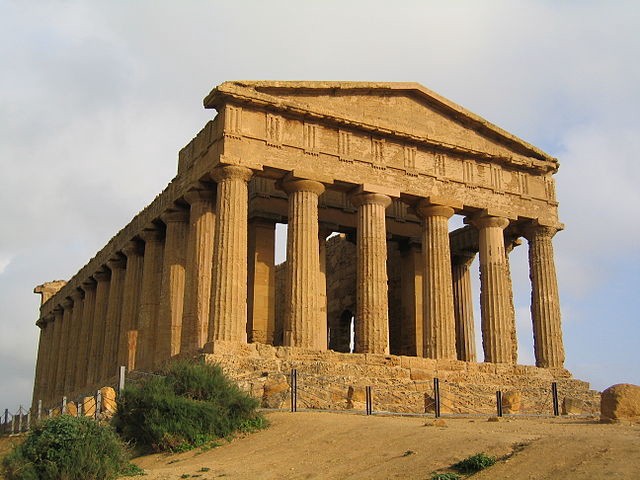 Agrigento, the ?Temple of Concordia.? (source)
Agrigento, the ?Temple of Concordia.? (source)
Grand as all the temple sites of Magna Grecia are ? Paestum, Segesta, and Selinunte are all on this list ? the grandest of them all is Agrigento, the ancient Akragas, where a walk through a grove of almond and olive leads you from magnificent Greek temple to magnificent Greek temple, all of them perched on an impossibly photogenic ridge. The site is hot in summer but truly beautiful all throughout the year, thanks to the warm climate, sea views, and some gorgeous Mediterranean landscaping. The bloom of the almond trees in February is particularly stunning, and the wonderful spread of the site makes it a perfect botanical garden ? it?s almost as if the ancients spaced out their temples to cater to the tourist experience.
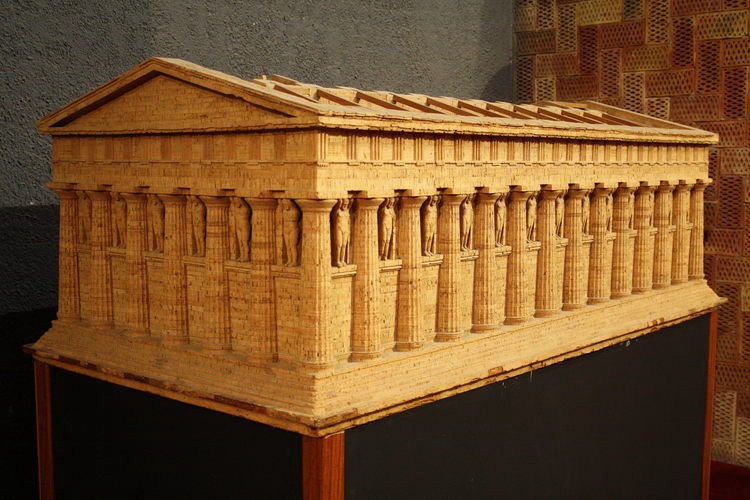 Model of the mostly ruined Temple of Zeus, Agrigento.
Model of the mostly ruined Temple of Zeus, Agrigento.
The so-called Temple of Concordia is the star attraction, a splendidly preserved Doric temple in a warm buff stone, but the site boasts seven temples, all of which are worth visiting, and much besides: the remains of an ?Atlas,? part of the temple of Zeus, shows its utterly unique temple design. Alone of all the Greek sites in Italy, the Valley of the Temples has been accorded UNESCO World Heritage status. The adjacent town of Agrigento is a kind of miniature Sicily in itself, with ancient, medieval, Renaissance, Baroque, and modern buildings in a kind of glorious jumble. Olives, sunshine, sculpture, blossom, wine-dark sea, history laid upon history: if you want to get the experience of an ancient Greek temple, it?s pretty hard to beat Agrigento.
You don?t have to choose just one, of course. The best is to find a way to see them all. Have a favorite we left off our list? Feel free to add it in the comments.
Ilias Kolokouris and Eugene Cunningham contributed to this article.
John Byron Kuhner is former president of SALVI, the North American Institute of Living Latin Studies, and editor of In Medias Res.
